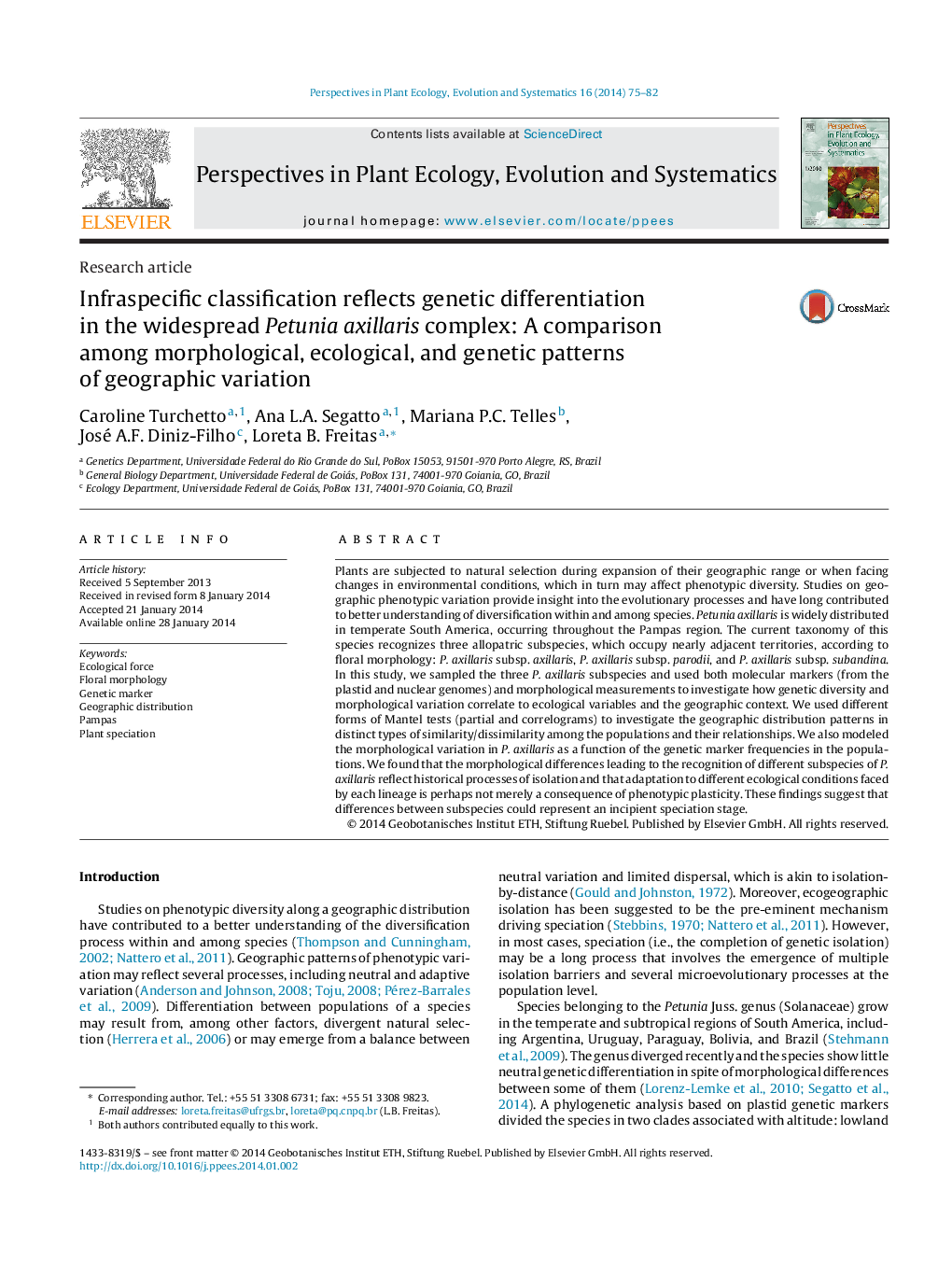| Article ID | Journal | Published Year | Pages | File Type |
|---|---|---|---|---|
| 4400937 | Perspectives in Plant Ecology, Evolution and Systematics | 2014 | 8 Pages |
Plants are subjected to natural selection during expansion of their geographic range or when facing changes in environmental conditions, which in turn may affect phenotypic diversity. Studies on geographic phenotypic variation provide insight into the evolutionary processes and have long contributed to better understanding of diversification within and among species. Petunia axillaris is widely distributed in temperate South America, occurring throughout the Pampas region. The current taxonomy of this species recognizes three allopatric subspecies, which occupy nearly adjacent territories, according to floral morphology: P. axillaris subsp. axillaris, P. axillaris subsp. parodii, and P. axillaris subsp. subandina. In this study, we sampled the three P. axillaris subspecies and used both molecular markers (from the plastid and nuclear genomes) and morphological measurements to investigate how genetic diversity and morphological variation correlate to ecological variables and the geographic context. We used different forms of Mantel tests (partial and correlograms) to investigate the geographic distribution patterns in distinct types of similarity/dissimilarity among the populations and their relationships. We also modeled the morphological variation in P. axillaris as a function of the genetic marker frequencies in the populations. We found that the morphological differences leading to the recognition of different subspecies of P. axillaris reflect historical processes of isolation and that adaptation to different ecological conditions faced by each lineage is perhaps not merely a consequence of phenotypic plasticity. These findings suggest that differences between subspecies could represent an incipient speciation stage.
